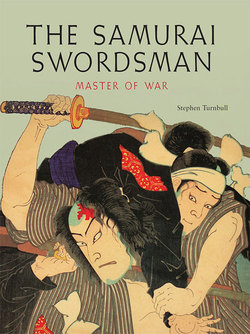Читать книгу Samurai Swordsman - Stephen Turnbull - Страница 7
На сайте Литреса книга снята с продажи.
ОглавлениеPREFACE
The figure approaches from a distance, following the dusty road over the brow of a hill. As he gets closer, he is seen to be a man who is travel-stained and wild, with a sword at his side. He stops, and our eyes meet. Another man is nearby. He too is armed, and he is waiting. The opponents approach each other. There is the flash of a sword blade, and one falls dead.
This is the image projected almost daily in Japan by a million television screens, comics, and films. The wanderer is victorious, and he will wander again. He (and it is almost always “he,” with notable exceptions, discussed in Chapter 8) is an expert in the martial arts, ruthless and deadly, and always ready for his next encounter. He is the samurai swordsman. The image of this legendary warrior is also fostered in the modern practice of the martial arts of Japan, whose devotees model themselves upon him, seeing themselves as heirs to a great tradition. The martial arts may have been refined and modified in response to changing conditions, but they still enshrine the more subtle and esoteric traditions of the brave samurai swordsman.
In addition to the samurai heritage, the other theme that we will follow throughout these pages is the development of the martial arts themselves. Although the fighting arts of the samurai sword will be emphasized, other techniques of single combat, using bow, spear, and dagger, will be studied to see how their prominence changes through history, and to examine closely how these weapons were actually used in the time when skill meant survival, and failure, death.
This work is a revised version of an earlier book of mine, The Lone Samurai and the Martial Arts, which has been out of print for many years. The text has been thoroughly reworked and augmented by many new illustrations. Much new material has become available since the late 1980s, and a whole new generation of scholars has been producing excellent work from primary sources, which has raised questions about many established notions about samurai warfare. For example, the calling out of pedigrees and the issuing of personal challenges in the heat of battle, often regarded as the stock in trade of the samurai, has been called into question. I also acknowledge the high-quality research into the structure and design of Japanese armor undertaken at the Royal Armouries, Leeds, by Ian Bottomley. I also wish to acknowledge the cooperation of the Maniwa Nen-ryū dōjō and other martial arts institutions in Japan.
—Stephen Turnbull
